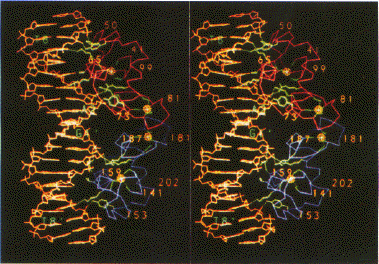Steroid response elements are DNA sequences that are bound by steroid receptors. Steroid receptors are proteins that have a binding site for a particular steroid. Once they bind this molecule, they are able to bind to their response element.
The response element is part of the promoter of a gene. Binding by the receptor activates or represses, as the case may be, the gene controlled by that promoter.
It is through this mechanism that steroid hormones turn genes on (or off).

This image (courtesy of P. B. Sigler) shows a stereoscopic view of the glucocorticoid response element (DNA, the double helix shown in yellow at the left of each panel) with the glucocorticoid receptor (a protein homodimer, right portion of each panel) bound to it.
The glucocorticoid receptor, like all steroid receptors, is a zinc-finger transcription factor; the zinc atoms are the four yellow spheres. Each is attached to four cysteines (shown in dark green).
For a steroid hormone to turn gene transcription on, its receptor must:Each of these functions depend upon a particular region of the protein (e.g., the zinc fingers for binding DNA). Mutations in any one region may upset the function of that region without necessarily interfering with other functions of the receptor.
| Welcome&Next Search |